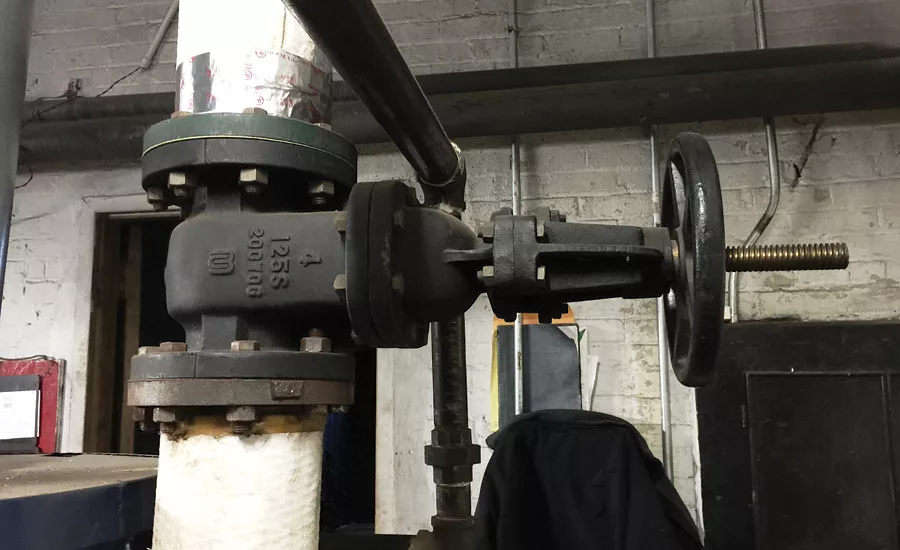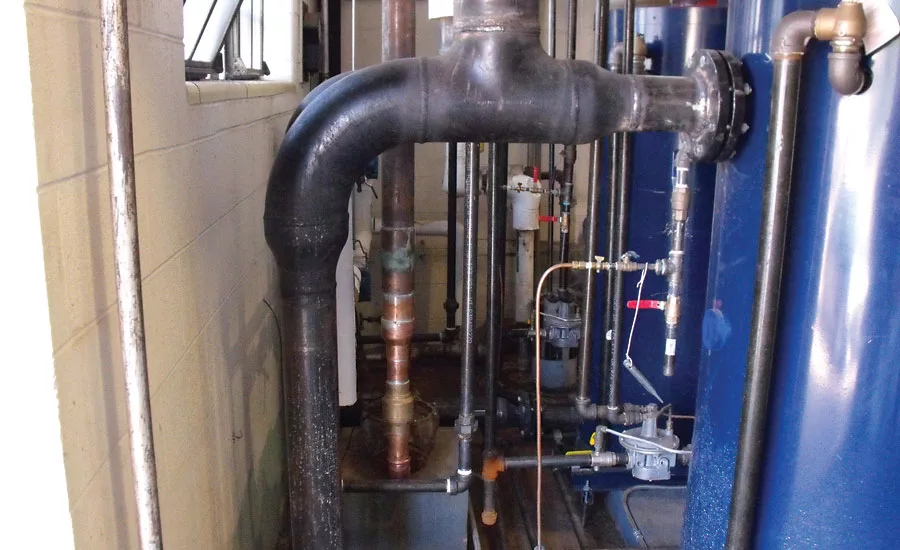Concussion dangers in a boiler room
Migraines were a daily occurrence and my brain seemed to be in a fog, unable to focus.



While commissioning a new boiler, the combustion analyzer showed the carbon monoxide levels rising rapidly. If the CO levels rose too high, the analyzer would freeze, making it impossible to complete the start-up of the boiler. To avoid the delay, I jumped up to pull the probe from the boiler stack before it reached the shutoff level of the analyzer. I did not see the black iron pipe directly above me.
My head crashed into the horizontal gate valve handle and the impact caused me to see stars everywhere and my legs were wobbly. I fought through the pain and dizziness to get the boiler started because the building needed heat. I left the jobsite with a bad headache and bruised pride.
Two weeks later, the dizzy spells started, especially when getting out of a chair. Migraines were a daily occurrence and my brain seemed to be in a fog, unable to focus. The mundane tasks I usually breezed through seemed much more difficult. Noisy places such as boiler rooms, restaurants or even attendance at church would set off the painful headaches and visual disturbances, which were like trying to look through a small pipe. Driving at night was almost impossible as the opposing car headlights would feel like daggers in my eyes. I had to nap daily due to extreme fatigue.
The first panic attack hit me while attending the ASHRAE convention, two months after my accident. My heart raced and breathing was difficult, forcing me to stop and catch my breath. The second panic attic happened when I was inside a car wash. I kept pushing the vehicle brake pedal thinking I was moving even though the vehicle was in park. This is common with concussion victims as things moving past you can trigger symptoms. I thought I was going crazy.
Reading was very difficult and retention was almost nonexistent, forcing me to reread everything. Little things would cause my temper to spike, resulting in me snapping at my loved ones.
My adult children made me schedule an appointment with my primary care physician. When I explained my symptoms, she looked at me and asked, “Did you hit your head? It sounds as if you have a concussion.” I disagreed with her prognosis as I hit my head numerous times and nothing like this ever happened. She suggested I see a local concussion specialist.
I was familiar with concussions as my youngest son played high school soccer and missed four weeks due to a concussion when his head collided with an opposing player’s knee. Sidney Crosby, with the Pittsburgh Penguins, missed almost a year due to a serious concussion. Rarely a week goes by without news about brain damage that NFL players sustained during their playing days. I understood how they received concussions due to the violent impacts inherent in sports but remained unconvinced I had one by simply banging my head into a pipe.
I met with the specialists at the University of Pittsburgh Medical Center’s concussion team in Pittsburgh, headed by Dr. Michael Collins. UPMC employs the innovators responsible for the development of the ImPACT concussion tests used by almost every professional sports team in the MLB, NFL, NHL and even WWE. If your child plays high school sports, he or she has probably seen the test. Currently, more than 7,000 high schools and 1,000 colleges employ this testing for their student athletes.
The appointment started with a test on a computer which measured comprehension and memory. All I had to do was to remember a list of simple words, symbols and letters, something I mastered early in grade school. After the computer game, I was seen by two specialists who held a popsicle stick in front of me and moved it up and down, in and out, and right to left — reminding me of the Three Stooges movies. I was diagnosed with a concussion and sent to rehab where they had more games purposely designed to trigger headaches and dizziness. It took three months to finally feel better. I still celebrate a headache-free day.
If you are suffering any of the following symptoms, you may have unknowingly been concussed. Please have yourself checked out.
• Headache or migraine.
• Dizziness.
• Cognitive difficulty (fogginess, attention problems, memory problems).
• Nausea.
• Fatigue.
• Changes in mood.
• Trouble sleeping.
• Sensitivity to light or noise.
What is a concussion?
According to the Centers for Disease Control & Prevention, a concussion is a traumatic brain injury caused by a bump, blow or jolt to the body that causes the head and brain to move rapidly back and forth. It does not have to be a blow to the head to cause a concussion. I do not grasp the technical explanation of what happens to a brain suffering a concussion but understood it when it was referred to as a “short circuit” inside the brain. The frustrating part of a concussion is there are no outward signs such as a bruise or cut.
Concussions appear to be on the rise according to SFM, a worker’s compensation insurance specialist. Between 2012 and 2014, it saw a 48% increase in claims where concussions caused injured employees to lose time from work. One of the other items I found fascinating was that females have a higher rate of concussions than males.
• Costs.According to the U.S. Department of Labor’s Occupational Safety and Health Administration, concussions cause approximately $60,770 in direct costs and $66,847 in indirect costs per incidence in the workplace.
• Treatment.I was lucky to have one of the premier concussion experts in the world in my hometown and suggest you find someone who specializes in concussions. The treatment for concussions has changed dramatically in recent years. It used to be thought rest and quiet were needed to heal but researchers have new treatment options including regular exercise and proper nutrition.
• Recovery.Dr. Collins estimates 90% of the patients seen in their clinic make a full and complete recovery, leaving about 10% with recurring issues. This makes it important you avoid concussions in the first place.
Jobsite safety
These are a few suggestions I have for anyone working inside a boiler room.
• Avoid hitting your head.There is a tremendous amount of pressure on a service technician to get the heating or cooling unit operating quickly. The pressure comes from a self-imposed sense of duty, the building owner or your employer. I have learned the hard way to slow down and work safely. Another 10 minutes will not really matter when servicing a heating system.
• Use proper equipment.I am guilty of standing on chairs or pipe inside the boiler room to reach different boiler components instead of using a ladder and realize now how dangerous that is.
• Look around. Familiarize yourself with the surroundings. Look around for spilled water or tripping hazards such as low pipe and ductwork or uneven flooring.
• Look up. Be sure nothing is above you that could fall and hit you. My electrician friend forgot his tape measure was atop his ladder and it fell off and conked him on the head when he moved the ladder.
• Use safe tools. An installer friend was using a 36-in. pipe wrench with worn teeth to disassemble an old pipe connection when the wrench slipped and hit him on the forehead, causing a bloody gash and a concussion.
• Plan an escape route. I have been inside a boiler room when the boiler relief valve lifted, filling the room with steam. Visibility was zero and navigating the maze inside the room to the exit door proved to be very difficult. I made my way to the door with banged shins. In addition, steam displaces oxygen affecting your brain. Navigating a boiler room is challenging even without a brain injury.
• Protect yourself. If you are like me, I seem to bang my head more often when I wear a hardhat than when I do not. I found the perfect solution, a bump cap. It looks like a baseball hat but has padding and a hard plastic shell inside. It does not add the extra height of a traditional hard hat. It works great and I wear it anytime while inside a boiler room.
• Two is better than one. If you can, have a companion while inside a boiler room. There are many dangers inside a boiler room and I like to keep a coworker with me so we can watch each other’s back. I realize that may not always be possible, so I make sure the customer knows I am there and will check on me once in a while.
I lost three months of my life to a concussion, so please work safely.
Looking for a reprint of this article?
From high-res PDFs to custom plaques, order your copy today!





